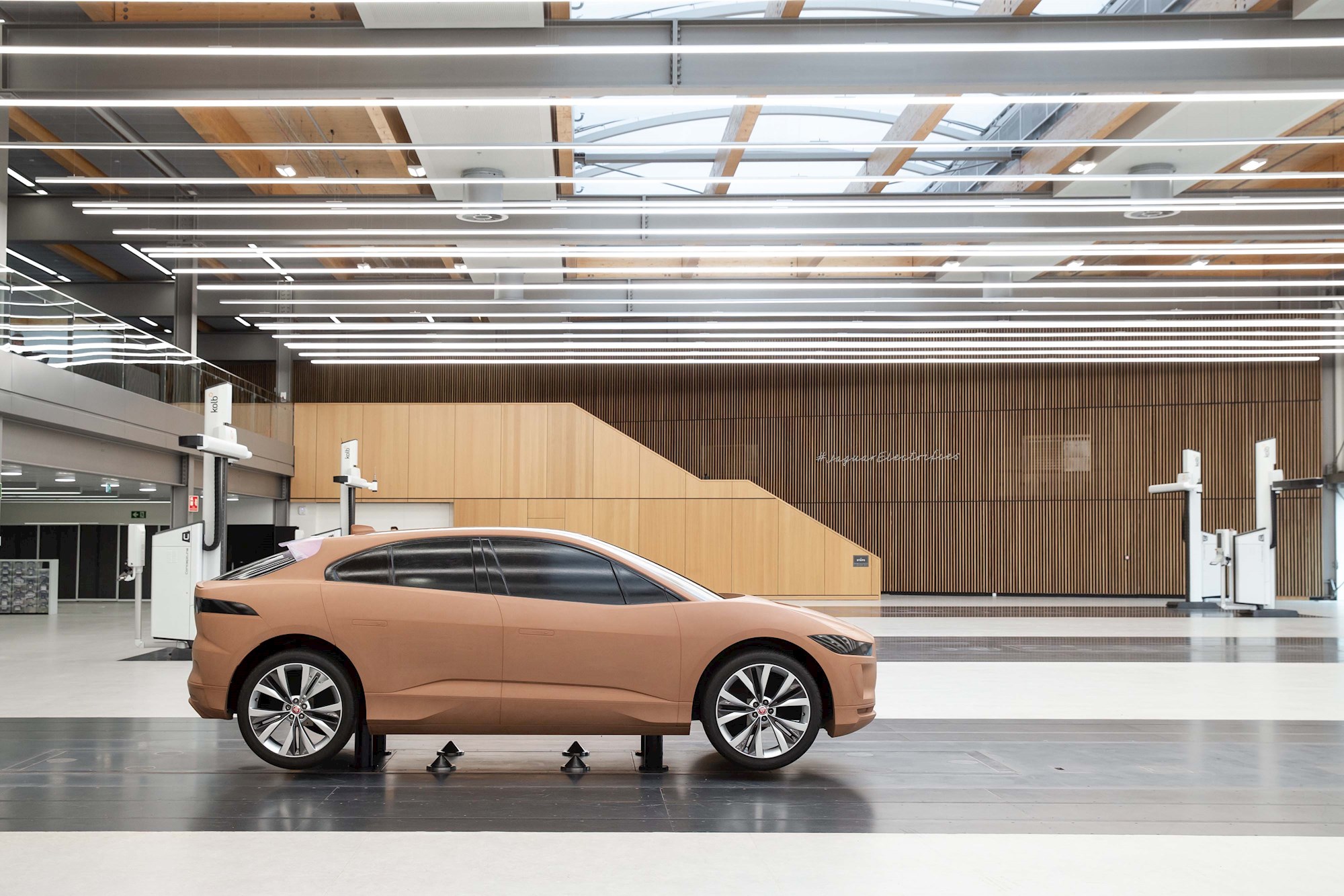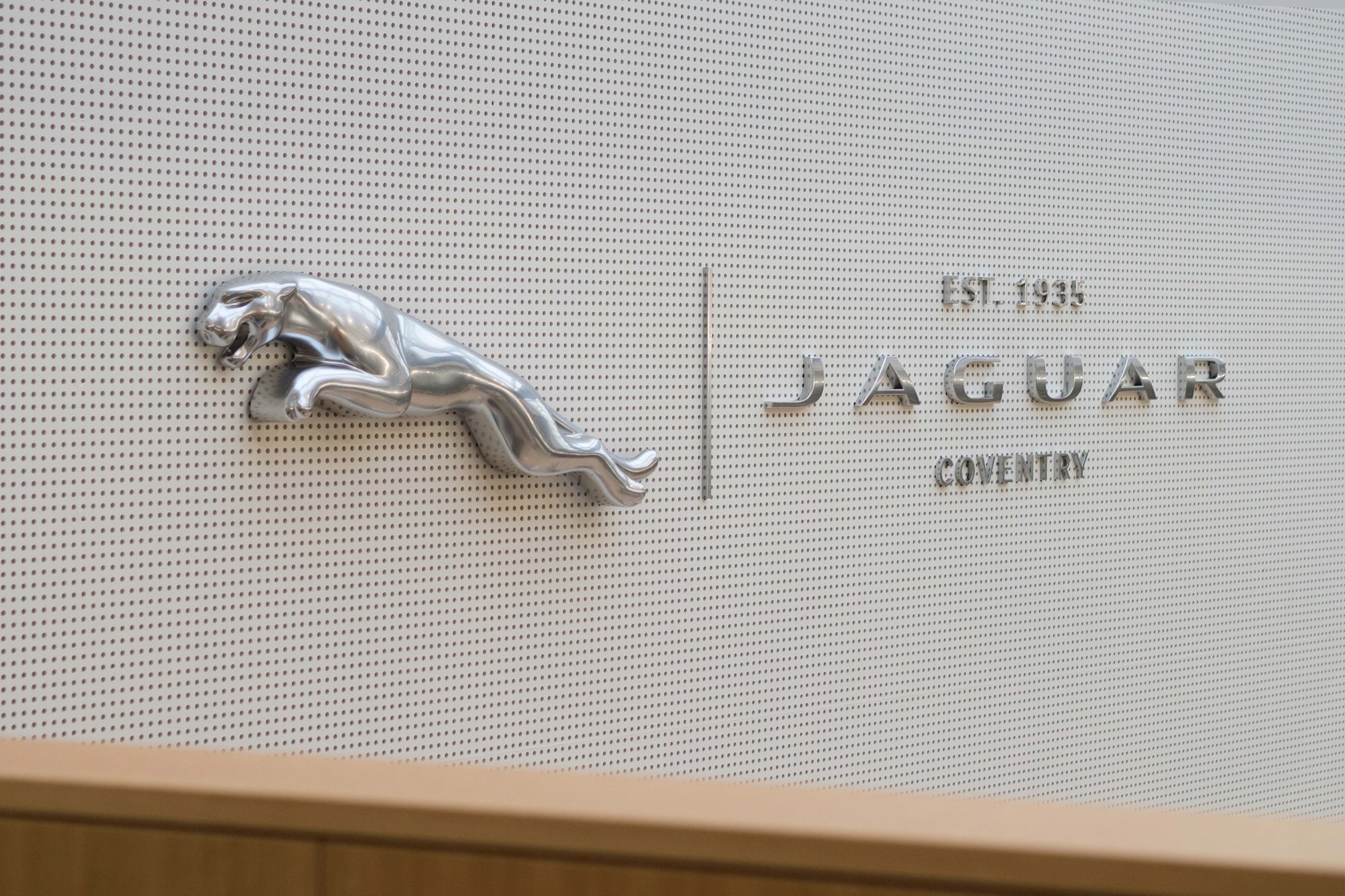Jaguar has unveiled its new dedicated design studio in Gaydon, bringing the entire design team into one purpose-built creative space for the first time in the marque’s 84-year history.
Led by Jaguar Design Director, Julian Thomson, the new studio is the most advanced automotive design centre in the world, developed to enhance the human creative design process with world-leading technologies.
The ‘Heart Space’, a collaborative hub at the centre of the new Jaguar Design Studio, will bring together the diverse and creative 280-strong team as it designs future generations of Jaguars.
Surrounding the Heart Space are bespoke working environments for the Interior, Exterior and Colour and Materials teams, plus Design Visualisation and Design Technical disciplines.
The new studio has industry-leading technology, including custom-made clay modelling machines allowing 20 models to be worked on at once, virtual reality (VR) systems and an 11-metre 4K digital display wall known as ‘The Electric’.
The floor area of the new Jaguar Design Studio measures over 12,000m2 – double that of the previous studio spaces based in Whitley.
“The new facility brings the entire design team together in one hugely creative space,” said Thomson.
“We truly believe that inspiration comes from interaction and collaboration. Our studio is fitted with the latest technologies but, just as important, is the diversity of human expertise and our passion for Jaguar which helps us design the extraordinary.”
The main studios are named Studio 3 and Studio 4, taking inspiration from the numbers of the Le Mans-winning Jaguar D-types of 1957 and 1956 respectively, as well as paying homage to studios 1 and 2 at Whitley, which was the home of Jaguar Design from 1985.
Studios 3 and 4 house a total of 10 clay modelling plates, each measuring 20-metres long and capable of accommodating two clays, with a load capacity of 4.5-tonnes. For the first time, designers can now place interior and exterior models next to one another to improve synergy and collaboration between the two disciplines.

Each plate is fitted with floor-integrated machine rails to allow double-sided processing of models by the 3+2-axis Kolb Concept Line CNC clay milling machines, each fitted with a 1kw motorised spindle capable of 16,000rpm. The advanced system can switch between measuring and milling both quickly and easily.
The plates also feature floor-integrated lifts for the clay models. These provide continuous height adjustment, enabling the most ergonomic working positions for the Jaguar modellers.
The studios are fully temperature controlled to ensure clay remains in the ideal state to be worked by the 46-strong team of sculptors, while lighting is provided at exactly the right brightness and colour temperature for optimal vision.
Studio 4 faces north to ensure the purest light flowing in from the outdoor viewing area through huge glass doors. Models can easily be taken outside to be viewed in natural light and from a range of distances and angles. In total, the new Jaguar Design Studio has 906m2 of glazing, including three full-length skylights which flood the studio with natural light. The deliberately light and warm nature of the studio is completed by the extensive use of structural wooden beams.
Viewing models from various heights is as crucial as lighting, with the plan view of Jaguars historically incredibly important to designers, from the early sketching stages through to model-making. Now, for the first time, designers will be able to scrutinise the models from alternative heights from the Mezzanine, View Room and The Steps – an amphitheatre-style seating area.
In addition, VR plays an increasingly important role in Jaguar Design with digitalisation teams appearing at every stage of the process from sketching through to launch animations. A VR rig enables designers and studio engineers to test ideas in the virtual world much faster and more efficiently than ever before.

From the early conceptual stage, the Computer-Aided Surfacing (CAS) team convert the design sketches into digital 3D models while the in-house Design Visualisation and Animation (DVA) team works closely with designers and data teams to render and animate the sketches and 3D models.
The new Jaguar Design Studio will place a greater importance on advanced material technologies, too. The Colour and Materials team have more space and technology to investigate and test new and sustainable resources that continue to demonstrate the heights of luxury and tactility for the next generation of vehicles, while meeting Jaguar’s demanding quality standards.
The Colour and Materials teamwork across both the exterior and interior, playing a vital role in creating each vehicle, from devising new paint colours, to conceptualising the smallest beautiful interior details.
The Jaguar Design Studio is part of the wider Gaydon Engineering and Design Centre redevelopment.








